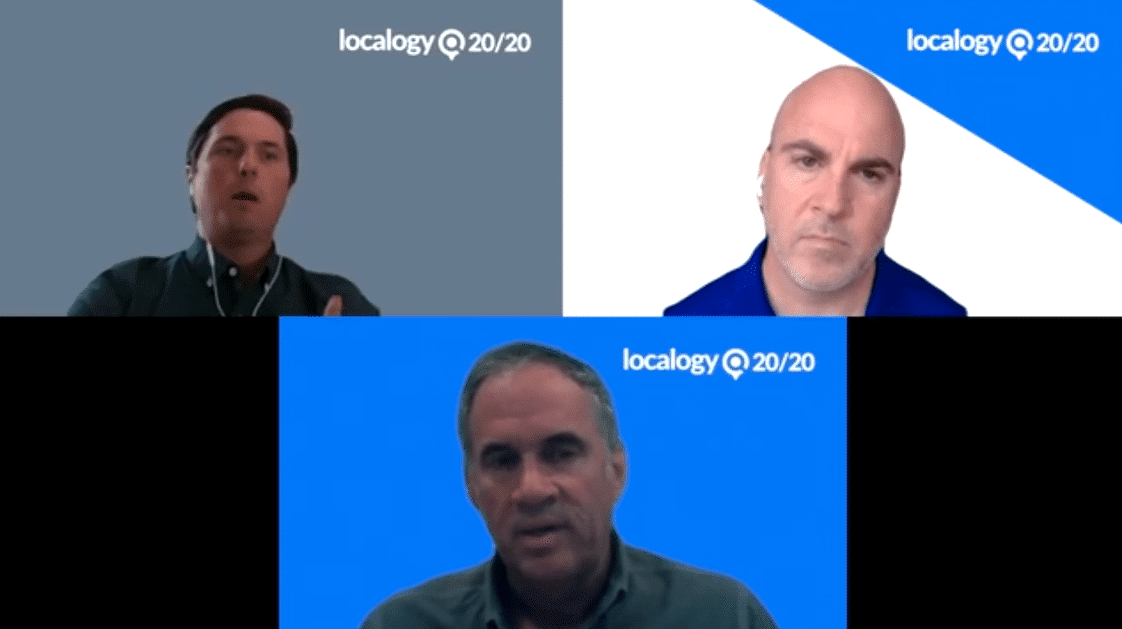Apparently life during the pandemic involves waking up one hour later. This makes sense. We’re all (or most of us are) working from home. So why not convert that commuting time into a little more shuteye? The problem is, if you are in the local TV business, all those pre-7 a.m. viewers you used to monetize are now sawing logs.
As Cox Media’s Rob Yarin put it during the final panel at Localogy 20/20, “7 a.m. is the new 6 a.m.”
This was just one small example of how TV is changing that was shared in a conversation with Yarin, moderator Dan Hight and Brian Cordes from Xandr, Warner Media’s digital advertising and analytics unit.
In fact, TV viewing habits have changed dramatically since the pandemic forced so many knowledge workers from the office into the dining room to work. Aside from the later start, daytime TV viewing is up, particularly at the noon hour. It seems the WFH crowd is taking a lot of TV breaks. Or maybe the TV is just staying on all day as a salve for the lack of human contact we’ve all experienced.
Certainly, COVID is impacting trends in TV, across all formats. But change has always been a constant in TV, at least since the emergence of the internet and smartphones have given us multiple screens and multiple ways to consume content. And the plethora of subscription services allow us to consume content when we want it, ad-free, just as long as we’re OK with that monthly draw from our checking account. The panelists got into all of this in some detail.
Advertising Isn’t Dead
Despite the growth in subscription-based streaming services, no one made the argument that TV advertising is dead. It’s changing. It’s becoming more targeting. But it isn’t dead. There is simply a limit on how much consumers will pay to avoid advertising.
“Linear TV is still relevant and delivers a broad audience,” Brian said. “I don’t see ad-supported TV going away anytime soon. Brands do need to start thinking about video more holistically. Things are evolving quickly and it’s hard to keep up.”
Rob agrees local TV advertising has some shelf live remaining. But changes are afoot.
“We now have the choice of ads or no ads. This shows how the ad-supported model is changing,” Rob said. “We have never had that before. And we still don’t on linear TV. Linear TV is going towards selling by impressions. That is a big change. It is not strictly about ratings anymore.”
Fewer, More Relevant Ads
So if advertising isn’t dead, how will it evolve?
“The ad-supported model will continue, but the value exchange has to change,” Brian said. He said the old 45/15 content to ads ratio is too heavy on ads. The new model is fewer, more relevant ads. Also, too many ad messages are repeated break after break on the same show. This is something we’ve all experienced.
“I have been working in the addressable TV market for seven years. It has grown exponentially by it is still in its nascent stages,” Brian said. “We allow customers to buy audience on addressable TV and extend the audience programmatically into connected-TV like Roku and Hulu. Also, you can now manage frequency. Back to the notion of the same ad over and over again. When you buy a Hulu or a Roku directly, we know people have multiple services, so you can manage frequency across those things. When buying programmatically you can. Because we know which ad is going to which person across these different platforms.”
Rob noted that the addressability Brian is talking about is coming soon to linear TV as well. He brought up ATSC 3.0 (aka NextGen TV). This new technology coming that will be powered by the Internet and allow targeted ads and content within broadcast TV. So, effectively, everything will soon become connected.
What Our Eyes and Ears are Experiencing
With cord-cutting accelerating, new streaming services launching almost daily, what do these changes in local “Listenership/Viewership” mean for media properties, buying entities and brand marketers? How can streaming services deliver precise ad targeting while maintaining viewers’ privacy preferences? How will the tensions between wanting targeted messages and privacy be resolved?Speaker(s):
Rob Yarin, Cox Media Group
Brian Cordes, Xandr (a Warner Media Company)





